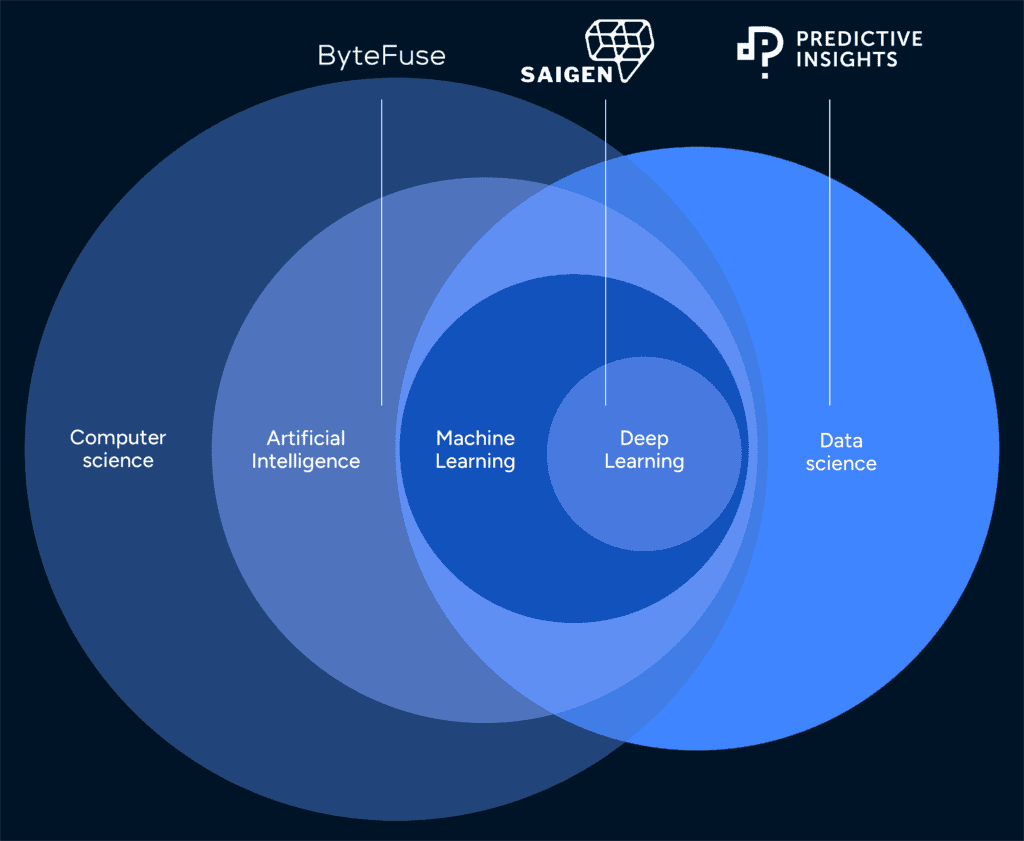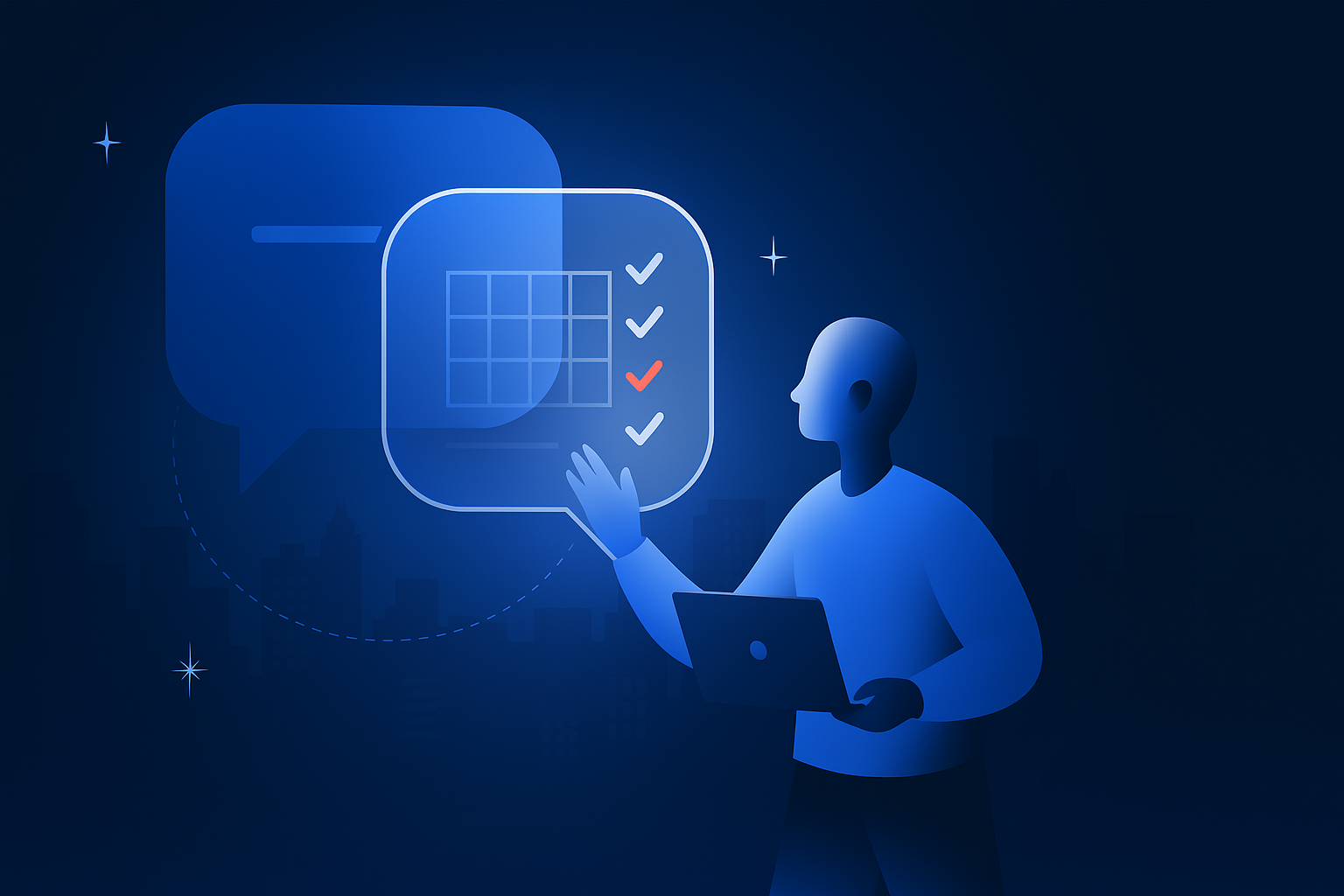Introduction
AI is not just a new technology—it’s reshaping industries. The question isn’t whether AI will disrupt your business but when and how, and it’s best to react to this type of disruptive change earlier rather than later. As Ethan Mollick, in his thought-provoking piece ‘On holding back the strange AI tide‘, reminds us: “The scientists and engineers designing AI, as capable as they are, have no particular expertise on how AI can best be used, or even how and when it should be used. We get to make those decisions. But we have to recognise that the AI tide is rising, and that the time to decide what that means is now.” In this part of our article series on things to consider about AI for business, we look at:- The different forms AI can take in your software and your business
- The opportunities and challenges (whatever they may be) are yours to take, no one else’s
- What some of those opportunities and their accompanying challenges could look like
AI-powered vs AI-enabled vs AI in your workflow
A subtle but important difference exists between AI-powered and AI-enabled software. AI-powered software suggests that artificial intelligence is a core component of the software, playing a central role in its functionality. For example, a machine learning platform that analyses big data or an autonomous vehicle system would be considered AI-powered, as their primary functions rely heavily on AI technologies. Developing AI-powered software solutions requires specialist skills in data science, machine learning, and deep learning. On the other hand, AI-enabled software implies that the software includes AI capabilities, but these capabilities are not necessarily at the core of its functionality. The goal here is to solve business problems using existing AI tools or service providers in the market. In short, AI-powered suggests a more integral and possibly more sophisticated use of AI, while AI-enabled indicates that AI is used to augment or improve existing functionality. This distinction is important in understanding the depth and nature of AI integration in a software product. Polymorph currently focuses on the potential of AI-enabled software, while a few of the partners in our network have been focussing on AI-powered products. These companies are highlighted in the infographic below. A third category needs to be mentioned: using AI in your workflow. As a company, we encourage as much use of AI tools in our work as is practical and ethical. Using AI responsibly has the potential to make us more efficient in developing your software, but it does not ultimately appear in your software. What do we mean by ethical and responsible use of AI? Rachel Woods from The AI Exchange calls it the ‘Reddit Rule’: If you wouldn’t post data, content, or code on Reddit anonymously, it shouldn’t go in ChatGPT. We apply the same rule to our customers’ confidential or sensitive data.
Are you ready for disruption?
There’s a sense of urgency for businesses and industries to adapt to a world augmented by AI. Here’s our question to you … As AI continues to revolutionise different fields, will you be at the forefront of this change, or will you be playing catch up with those who acted sooner? Disruptive innovation needs roughly three things:- the presence of some new enabling technology;
- an innovative business model capitalising on the new technology; and
- a clear benefit upstream and downstream
Content streaming is a recent example of how disruptive innovation can change the market. Utilising the growing power of the internet as the enabling technology, Netflix offered consumers the ability to search for a DVD in an online catalogue, rent it, and have it delivered. Not long after this business model took hold in the media industry, the company disrupted itself by providing subscription-based online content streaming.
The key to Netflix’s success might just have been how willing they were to redesign their existing (and already somewhat successful) business model.
Anyone with access to GPT-4 can outsource much of their work to it (provided it complies with their organisation’s AI policies – that’s a whole different topic). In many cases, underachievers with AI are outperforming top performers without AI. This unavoidable shift in how work is done necessitates a redesign of business processes and models. How will AI reshape the companies and team designs of tomorrow?
Learn how to use AI, and become familiar with it. AI can transform your industry and your business, so don’t get left behind.
What could this disruption look like?
AI, specifically LLM’s, has had (and continues to have) a notable impact on innovation. It’s predictive at its core, can analyse more complex decision paths, see more inputs, and alleviate the cognitive load on employees and business leaders alike. This ‘excess head-space’ so to speak, becomes available to innovate. Another way to think of AI is to compare it to a highly skilled intern. Many of your mundane day-to-day tasks can more easily be delegated to an LLM. For instance, we use AI at Polymorph to help synthesise user research. This makes the analysis and summarisation process more efficient. However, a human still reviews the results to ensure accuracy. Using AI as an intern, we can free up more time for critical thinking around the research findings and ensure the team can move forward in building the best possible software solutions for our clients. As a team, we have determined the potential needs of our current and/or future clients. We assume that businesses look for custom software solutions when they:- want to cut down on costs;
- need their teams to be more efficient;
- have a specific business problem that needs solving; or
- fear that they will fall behind in their industry.
Our thinking is that we could help our clients achieve these goals faster using AI. Whether we enable the software solutions we develop with AI, or whether we increase our efficiency and quality of work.
Conclusion
The disruptive nature of AI across industries presents both challenges and opportunities. Embracing this transformation requires a proactive approach, from upskilling the workforce to navigating ethical considerations. As we continue to harness the power of AI in our software solutions, we remain committed to driving innovation responsibly and ensuring that our clients stay at the forefront of industry advancements.“In conversations with educational institutions and companies, I have seen leaders try desperately to ensure that AI doesn’t change anything. I believe that not only is this futile, but it also poses its own risks.”

Ethan Mollick
Associate Professor at the Wharton School of the University of Pennsylvania




